#sceliphron
Explore tagged Tumblr posts
Text
this Mud-dauber Wasp chose our windowsil to build her nest! after a bit of investigation of me and my camera, she graciously allowed me to photograph her while she worked on her construction.
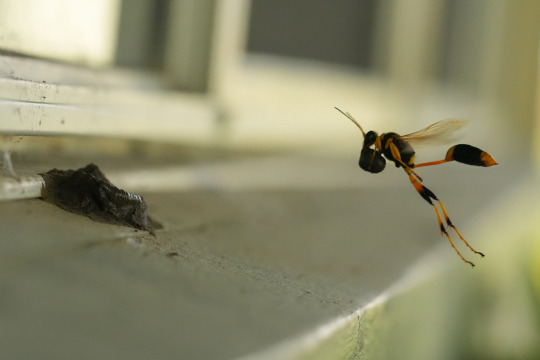

in the photos above, she has arrived with a ball of mud collected from somewhere nearby. this nest isn't for her to live in, but for her young to grow and pupate. in this mass of mud she will craft several individual cells, and provision them all with the paralysed bodies of orb-weaver spiders. each cell will have a single egg laid on the first spider, before being sealed off with more mud.
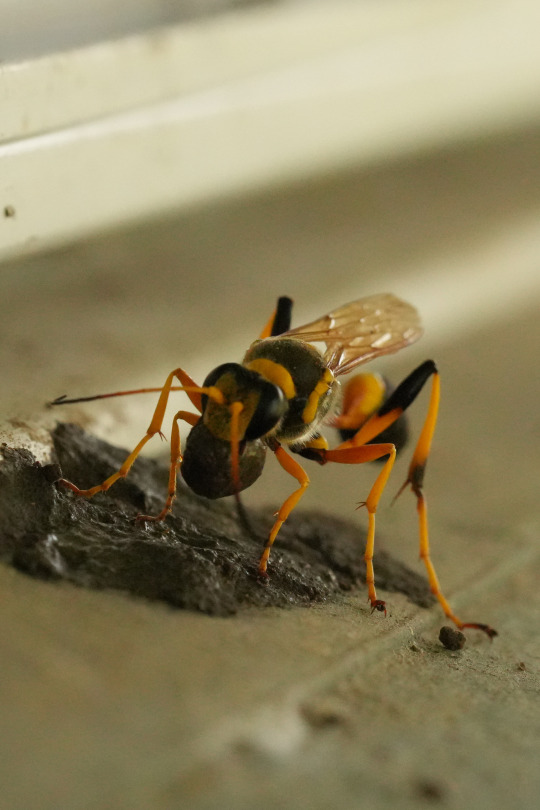
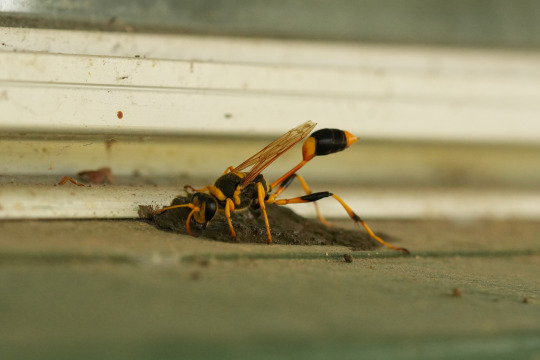
here, she picks the next spot to deposit her ball of mud, using her mandibles to smooth it onto the structure. when the larvae hatch, they will consume all the spiders in their respective cells, before pupating and then emerging as adults wasps.

each time she finished with a layer of mud, she would take a moment to groom her forelegs and antennae, before flying off to repeat the process. these photos were taken earlier in the Summer, and as of posting this, the adult wasps have yet to emerge.
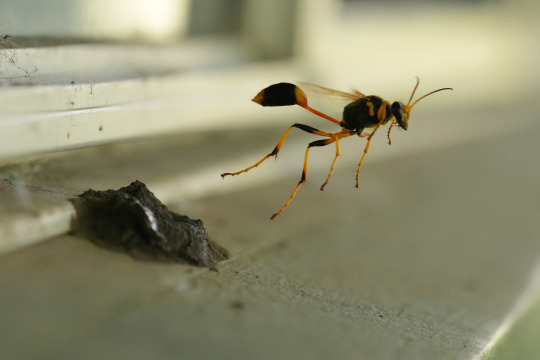
Covered-cell Mud-dauber Wasp, female (Sceliphron laetum).
#ljsbugblog#bugblr#entomology#macro#insects#hymenoptera#aculeata#wasps#sphecidae#thread-waisted wasps#sceliphron#slender mud-dauber wasps#sceliphron laetum#covered-cell mud-dauber wasp
2K notes
·
View notes
Text

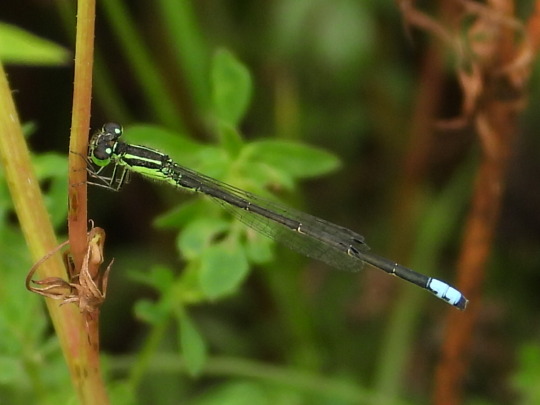
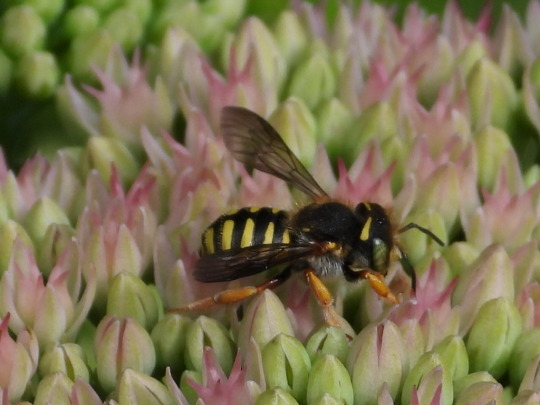
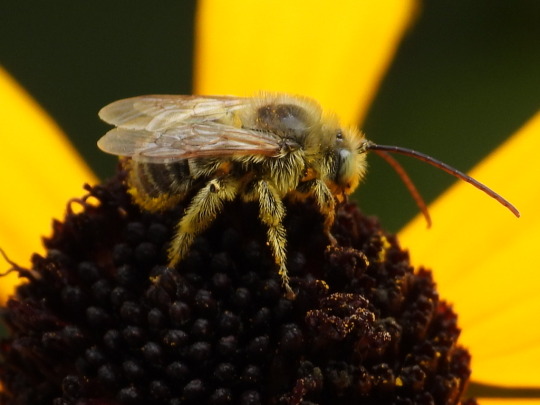
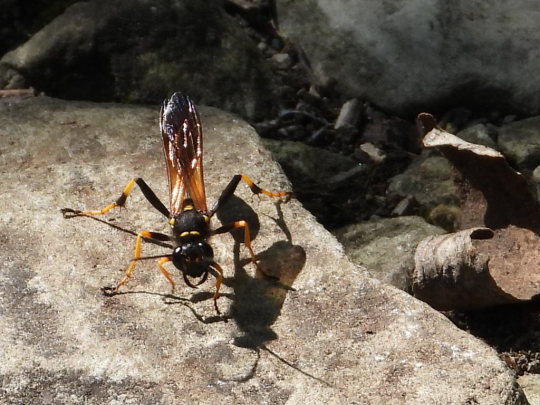
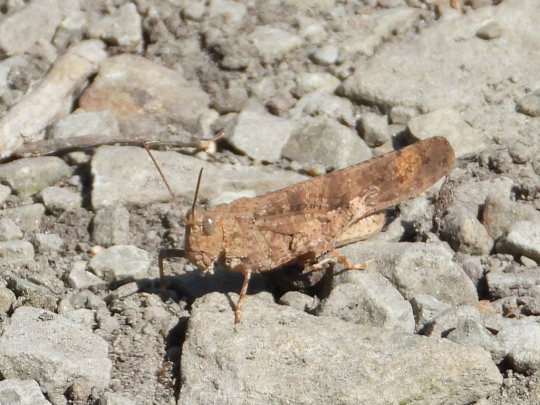

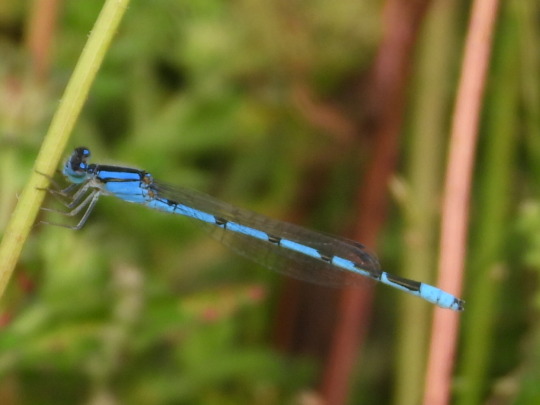
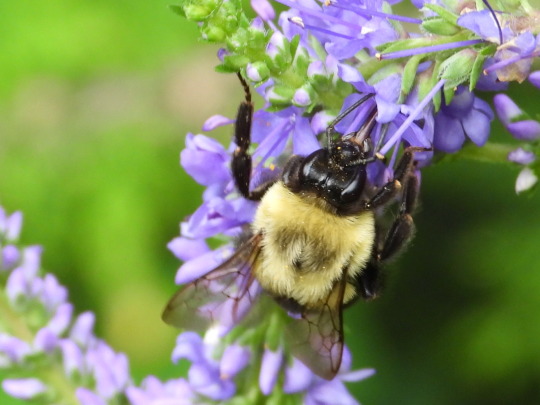
Some various macro shots taken with my new camera.
#entomology#hymenoptera#apocrita#wasp#insect#odonata#Lepidoptera#Orthoptera#Pieridae#Apidae#damselfly#bumblebee#Sceliphron#Anthidium#Bombus
29 notes
·
View notes
Text
#2037 - Sceliphron formosum - Vase-cell Mud Dauber
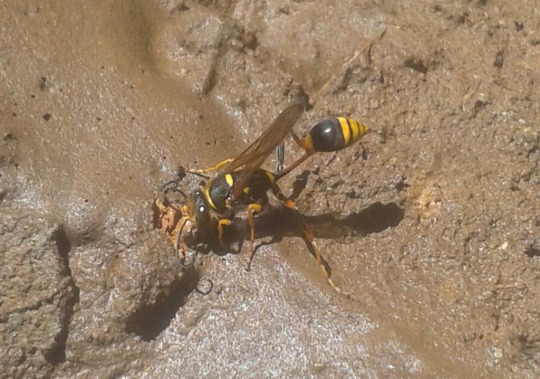
The genus Sceliphron occurs world-wide but only two species are generally recognized as native to Australia (although a single specimen from Parkerville in the Darling Range here in Perth might be a third species).
S. laetum I've already discussed - this is S. formosum. The Vase-cell Mud Dauber was originally confined to northern and eastern Australia but is now known to inhabit an increasingly wide area around Perth.
The North American S. caementarium is also found in Australia, after spreading across the Pacific. It's well-established in eastern Australia but has not yet reached Western Australia as far as I know.
S. formosum can be distinguished from laetum by its markings and by the construction of the nest - individual cells with a flat cap at one end, when complete, that are left uncovered by additional mud.

Pity I didn't spot that dead weevil when I took this photo at Coopers Mill on Cooleenup Island.
Sceliphron nests can be quite similar to some built by the Potter Wasps (Vespidae, subfamily Eumeninae), but the cocoons are quite different - papery dark-brown elongate ovoids, compared to the colourless pupa of vespids that are moulded to the inner walls of the cell.
2 notes
·
View notes
Text

Wasp sploot
Yellow-Legged Mud-dauber Wasp (Sceliphron caementarium)
August 20, 2024
John Heinz National Wildlife Refuge, Tinicum, Pennsylvania
#bug#bugs#photographers on tumblr#Sceliphron caementarium#Yellow-Legged Mud-dauber Wasp#wasp#wasps#bugblr#entomology#insects#insect#nature#animals#wildlife photography
153 notes
·
View notes
Text
I'm chillin in my truck, windows down, in the heat. This mud dauber looking wasp mfer barges, checking the place for hidey holes, buzzing all around. Stopped on the dash to tidy up, it turned around and ended up facing me head on. It acted startled to see me, visibly stopped and squared up like, "Oh, shit, didn't see you there". Bonked into the windshield a few times and then exited through the passenger window.
#Sceliphron caementarium#mutetext#i thought it was interesting it literally had like a startle moment where I think it realized another animal was staring at it#wasps are scary but the internet has helped to desensitize me to them#past me wouldve had to exit the truck for awhile#current me just cringed and hoped it didnt land on me lol#theres a yellow jacket nest in an old clothes line pole post and like my spouse wants to torch jt and im like#wellllll if they stay in their lane it shouldnt be too bad and theyll die off once winter hits anyways right???#aughhhh idk#its interesting though to go over and look at them their sentries will track you as you move around the nest#but i guess cause theyre a smaller colony or bc we arent antagonzing them theyre just chillin even when you get within like 2-4 ft of them
2 notes
·
View notes
Text




I caught this rambunctious creature flying around the kitchen. Outside you go.
Life pro tip: a cheap butterfly net with telescoping handle is excellent for relocating small friends, especially if they’re skittish and obsessed with the ceiling.
Yellow-legged mud dauber (Sceliphron caementarium)
Northern California
#mud dauber#wasp#bugs#despite their appearance mud daubers are fairly docile#they don’t sting unless they really have to#ie you grab at them or bother their nest#nature#nature photography#biodiversity#bugblr#animals#arthropods#inaturalist#entomology#insect appreciation#hymenoptera#buzz buzz#butterfly net#insects#catch of the day#creature#macro photography#small friend
329 notes
·
View notes
Text


A gentle Yellow-Legged Mud Dauber Wasp. I found her* caught inside, so I brought her out.
These guys feed on pollen as adults, but their larvae need protein. They make mud tubes as nests for their babies, and put spiders inside as food.
Here’s more info on these helpful bugs for the interested: https://www.inaturalist.org/taxa/121821-Sceliphron-caementarium
*pretty sure they’re a “she” based on antenna and abdomen shape.
21 notes
·
View notes
Text
The Nest of the Mud-Dauber Wasps that I Found
The nest of the mud-dauber wasps that I found in between my pile of books. Usually I like to crush their abandoned nests but this one is really nice, a work of nature's art, it's beautiful. The most likely species is Asian mud-dauber wasp (Sceliphron curvatum).

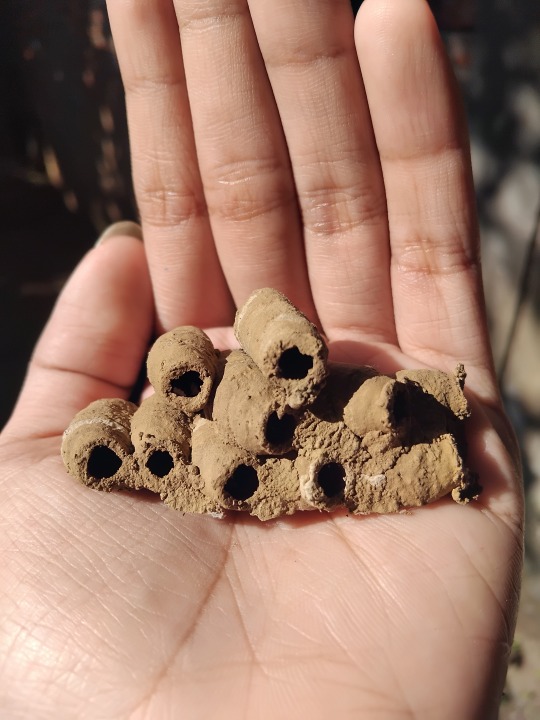
Their nests are structurally fragile, that's why i like to crush them with my fingers. Although they are parasitoids (not to humans), they are useful in reducing spiders. But yeah, I try to avoid them as much as possible, just as they avoid me because I'm human.
Taken on Friday, 9 May, 2025 at 08:08 with Samsung Galaxy A05s in my grandma's backyard.
#sofiaflorina#ソフィアフロリナ#mud dauber#mud daubers#mud dauber wasp#mud dauber wasps#wasp#wasps#wasp nest#wasp nests#nest#nests#insect#insects#insect nest#insect nests#bug nest#bug nests#bugblr#insectblr#piece of art#a piece of art#nature art#nature artwork#i found this#animal#animals#interesting#bug#bugs
13 notes
·
View notes
Text
Wasp (and bee and sawfly) holding year in review
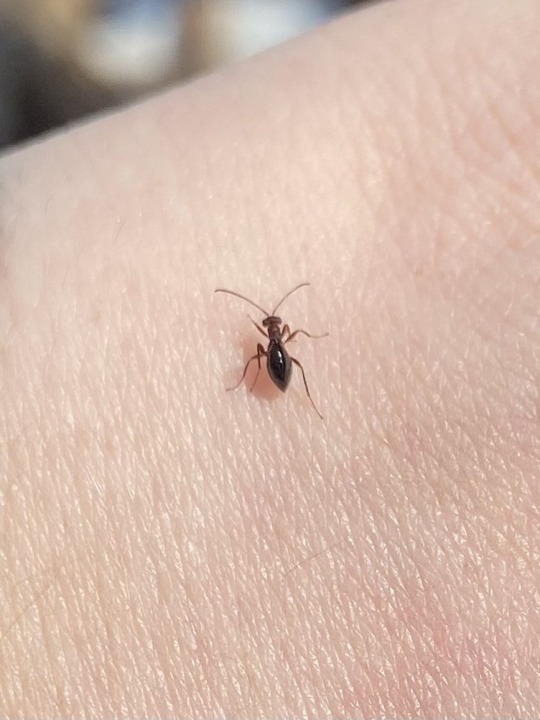

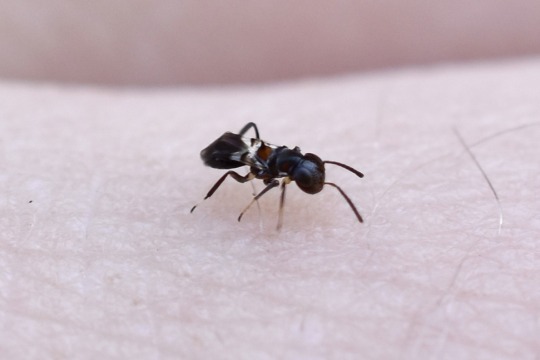
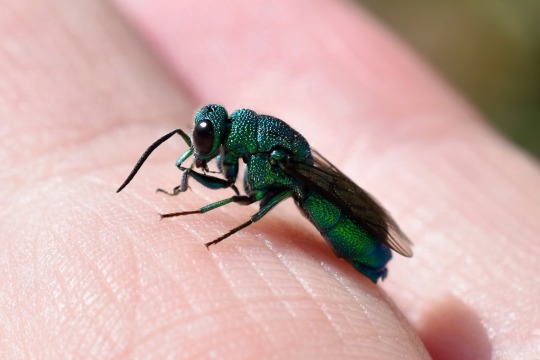


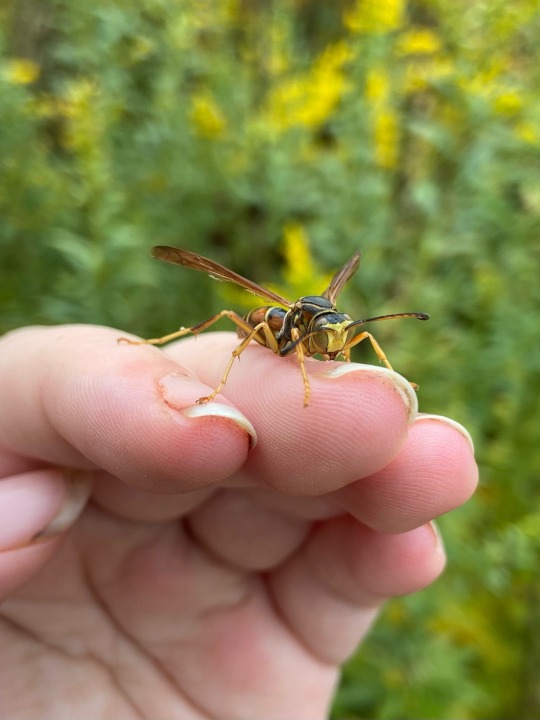
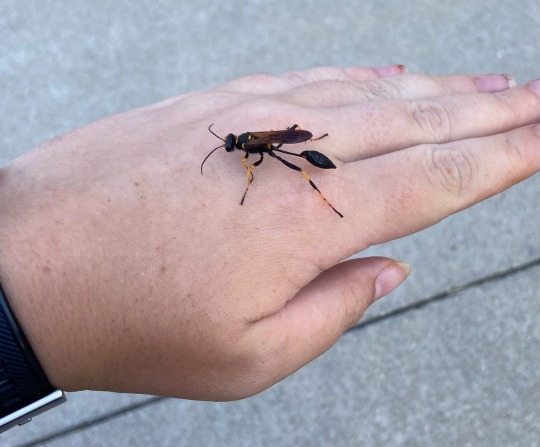
From left to right and top to bottom, these are: gall wasp (maybe genus Zopheroteras), sawfly (Dolerus sp.), parasitoid wasp (Encyrtus sp.), cuckoo wasp (Chrysis sp.), unidentified parasitoid wasp, calliopsis cuckoo nomad bee (Holcopasites calliopsidis), male northern paper wasp (Polistes fuscatus), yellow-legged mud-dauber (Sceliphron caementarium)

And my favorite find of the year: a Greene’s giant ichneumonid (Megarhyssa greenei)
All individuals shown here either cannot sting or have very mild stings
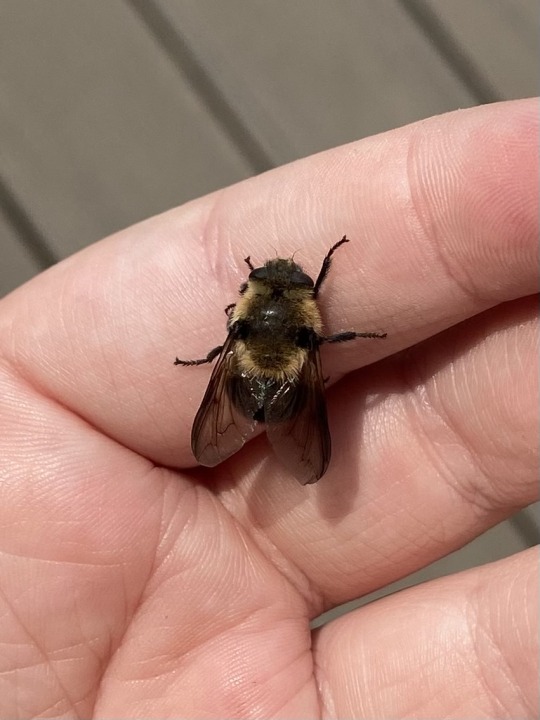
Bonus: a convincing bumblebee mimic, the deer bot fly (Cephenemyia sp.)
123 notes
·
View notes
Text
Sceliphron caementarium, Yellow-legged Mud Dauber Wasp, building her nest
#nature#photography#science#animals#arthropods#bugblr#invertebrates#macro photography#insecta#wasps#mud dauber wasps#video#nest#pottery
33 notes
·
View notes
Text


a good day for wasps! first is a Philanthus gibbosus, one of a group of wasps known as beewolves since the females hunt adult bees to feed their larvae. next a pompilid spider wasp, not going to attempt that ID.
this huge and very bold crickethunter Chlorion aerarium wandered very close to me, but didn’t bother staying still at all. Bicyrtes quadrifasciatus, which preys on stinkbugs, also didn’t give me any nice shots.

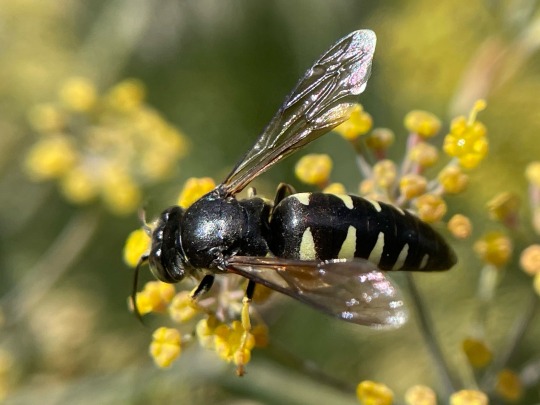

conversely this little Ectemnius seemed to be positively showing off its massive head.

seriously, the noggin on this beastie! and eyes! females of this genus hunt flies to provision their nests
and lastly the classic mud dauber Sceliphron caementarium gathering nesting materials in a puddle. a good day to be black & yellow!
160 notes
·
View notes
Text
just for fun, a compilation of every wasp species I've seen drink from the pond so far.
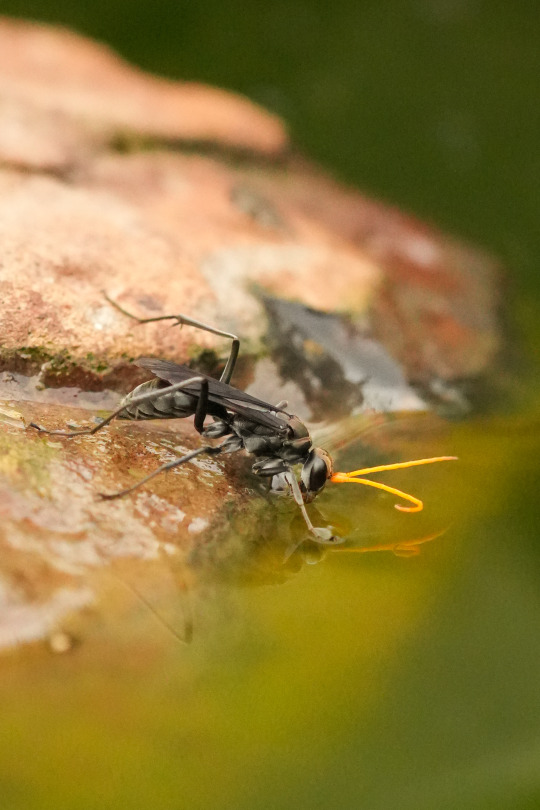
Spider Wasp, genus Fabriogenia.

Potter Wasp, subfamily Eumeninae.

Potter Wasp, genus Paralastor.

Square-headed Wasp, subfamily Crabroninae.

Vase-cell Mud-dauber Wasp, Sceliphron formosum.

Square-headed Wasp, genus Pison.

Australian Paper Wasp, Polistes humilis.
#ljsbugblog#bugblr#entomology#macro#insects#hymenoptera#aculeata#wasps#pompilidae#spider wasps#fabriogenia#vespidae#potter wasps#eumeninae#paralastor#crabronidae#crabroninae#square-headed wasps#pison#sphecidae#thread-waisted wasps#sceliphron#slender mud-dauber wasps#sceliphron formosum#vase-cell mud-dauber wasp#polistes#paper wasps#polistes humilis#australian paper wasp
1K notes
·
View notes
Text



Foeniculum vulgare (fennel) and Sceliphron caementarium (yellow-legged mud-dauber wasp)
Fennel was originally a Mediterranean plant but it has now become 'naturalized' in many parts of world and is a common sight in the suburb of Vancouver where I live. In its native habitat, it favors locations with dry soil, near the sea-coast or on a sunny riverbank.
Fennel is a hardy, perennial herb used in the cuisines of many countries and is grown in positively industrial quantities. India alone produces over 600,000 metric tones of fennel a year. Alexander the Great may have introduced this plant to India in 325 BC.
As for the yellow-legged mud-dauber wasp, it's native to North and Central America but has now become 'naturalized' throughout the world, including the Mediterranean basin. Theoretically, I could have taken these photos in fennel's home environment on one of the Greek islands. Welcome to globalization.
#flowers#photographers on tumblr#fennel#wasp#yellow#fleurs#flores#fiori#blumen#bloemen#White Rock BC#vancouver
111 notes
·
View notes
Text
#2036 - Sceliphron laetum - Covered-cell Mud Dauber
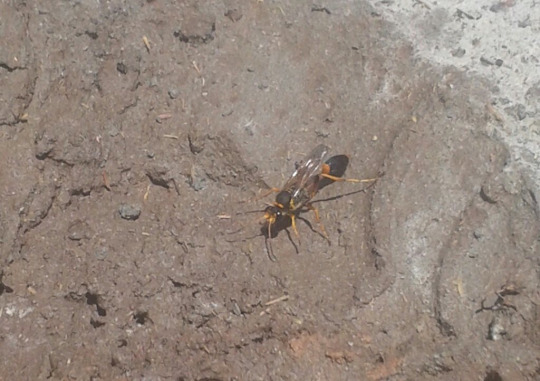
A large Sphecid wasp that builds roughly cylindrical cells out of mud (or wet concrete), stocks them with paralysed spiders as food for her young, then covers the entire thing in another layer of mud.
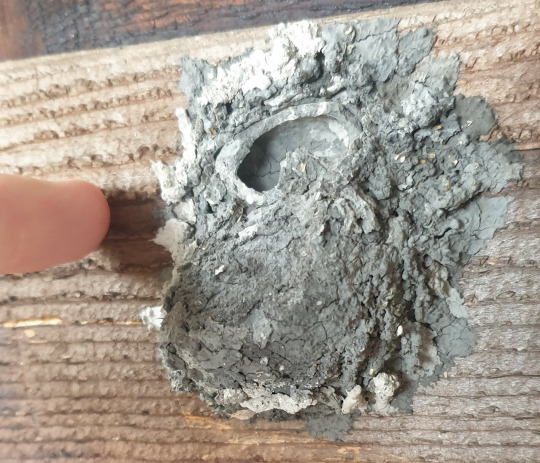
S. laetum is found across most of Australia, Papua New Guinea, and SE Asia. They find the sheltered walls of human buildings ideal wasp building sites. Like most solitary wasps, not particularly aggressive unless you go out of your way to bother them.
The usual victims are orbweaving spiders, but the wasps are picky about which of the paraysed arachnids in each cell they'll lay their egg on - it's usually one with a softer exoskeleton, that will be easier for the young wasp larva to start chewing into.
2 notes
·
View notes
Text





Yellow-Legged Mud-Dauber Wasp (Sceliphron caementarium) out back this afternoon. They almost never deign to be photographed, at least by me.
#nature#my photography#yellow legged mud dauber#nature photography#mud dauber wasp#wildlife photography#mud dauber#backyard nature#wasp#backyard wildlife#insect
5 notes
·
View notes
Note
what is your favorite kind of bug + why + when and where does it come out and do u have any photos :3
im doin top three cause fuck u

genus torymus, theyre hyperparasitoids! they lay their eggs in other wasps galls, this one was layin hers in a red cone gall on a valley oak, i saw it last spring but hawk finds em all the time

adesmus acanguana, a beetle with only 1 observation on inat, which is mine :)
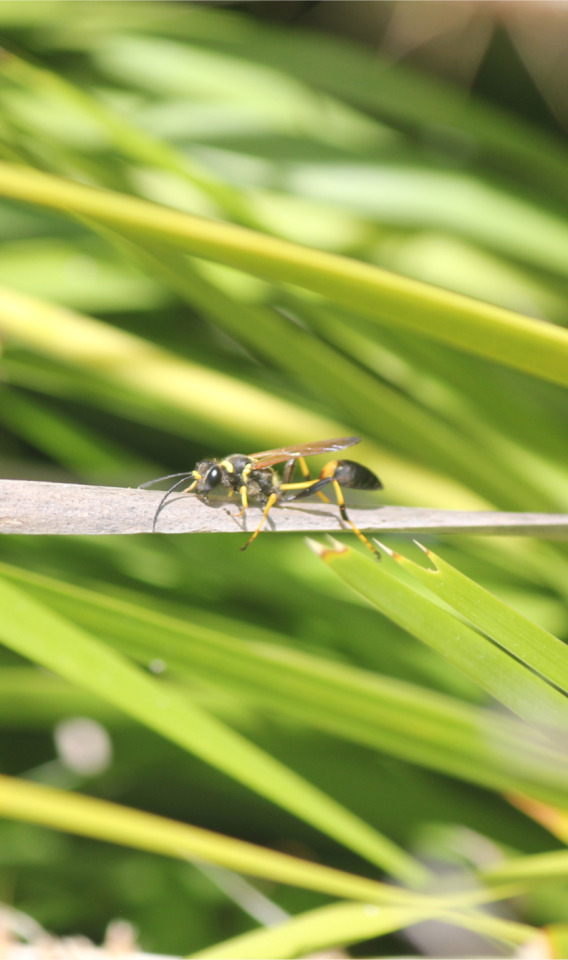
sceliphron caementarium, the yellow legged mud dauber! ive seen them in my yard and at my college multiple times :) they're very very sweeties and pose very nicely! ive seen them both mostly in summer+spring
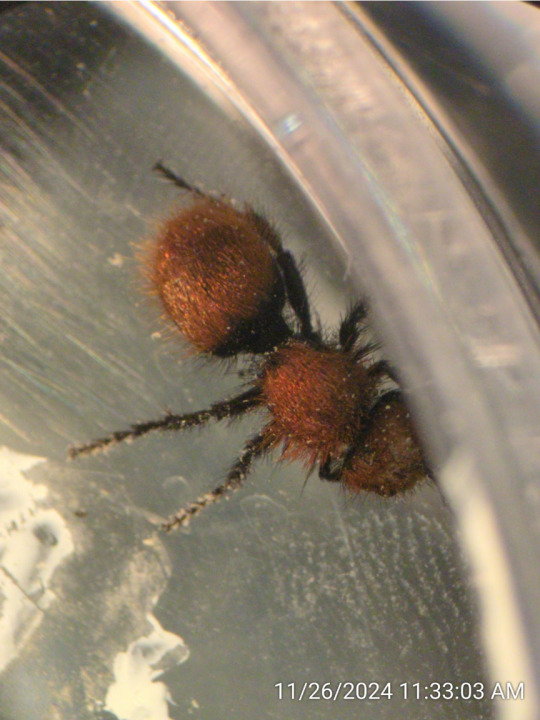
dasymutilla aureola, the pacific velvet ant :) my fave girl ❤️🧡🖤 saw 2 of these, both last autumn
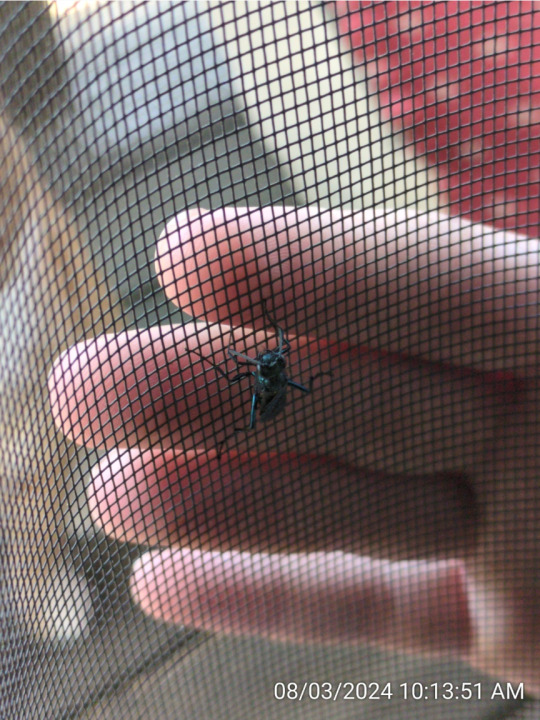
(likely) chalybion californicum, the common blue mud dauber ! my cats catch em a lot but they nest underneath their catio :( 💙
honorable mention:
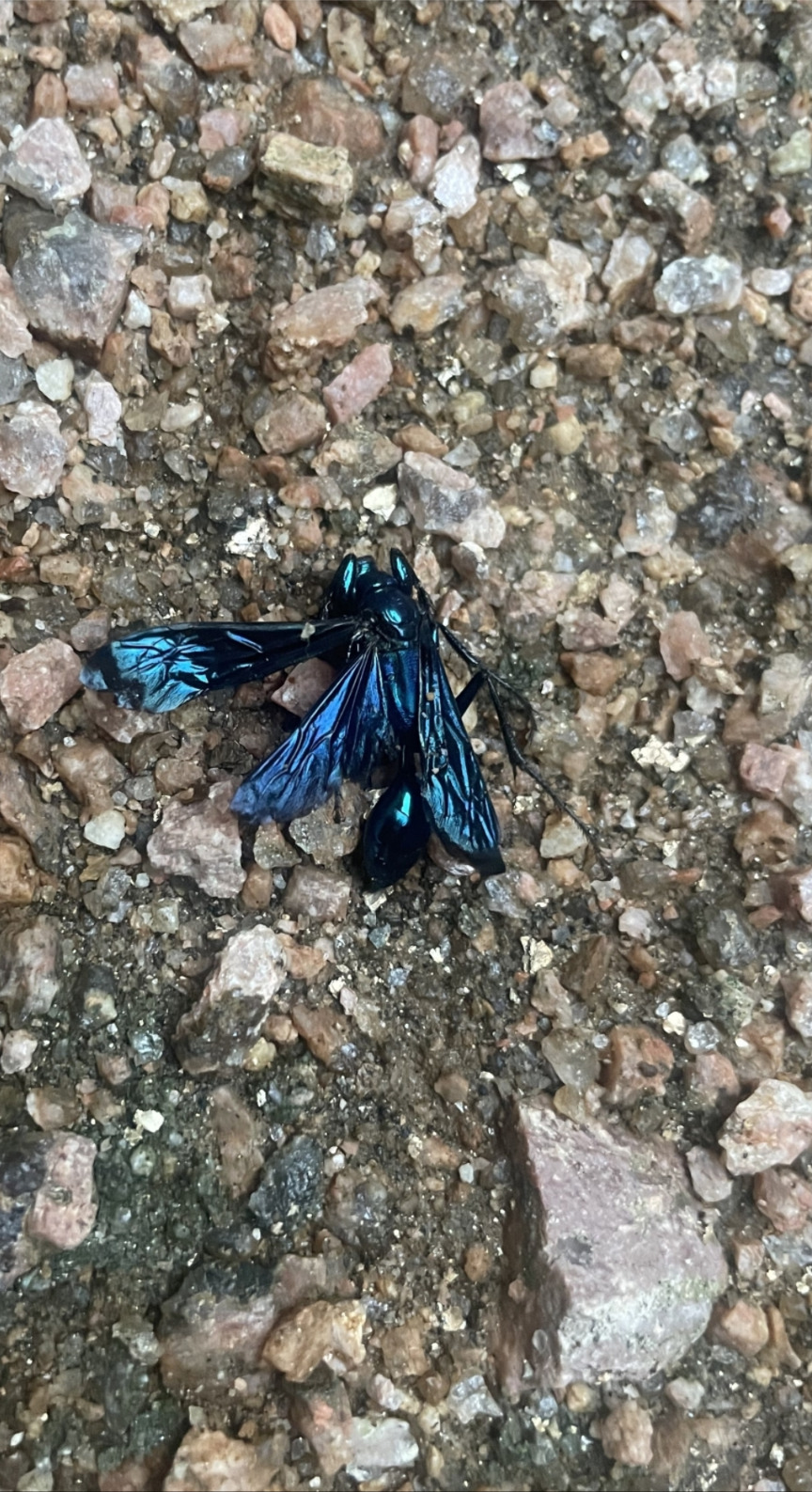
this weird unided sphecidae that i got shipped by ender
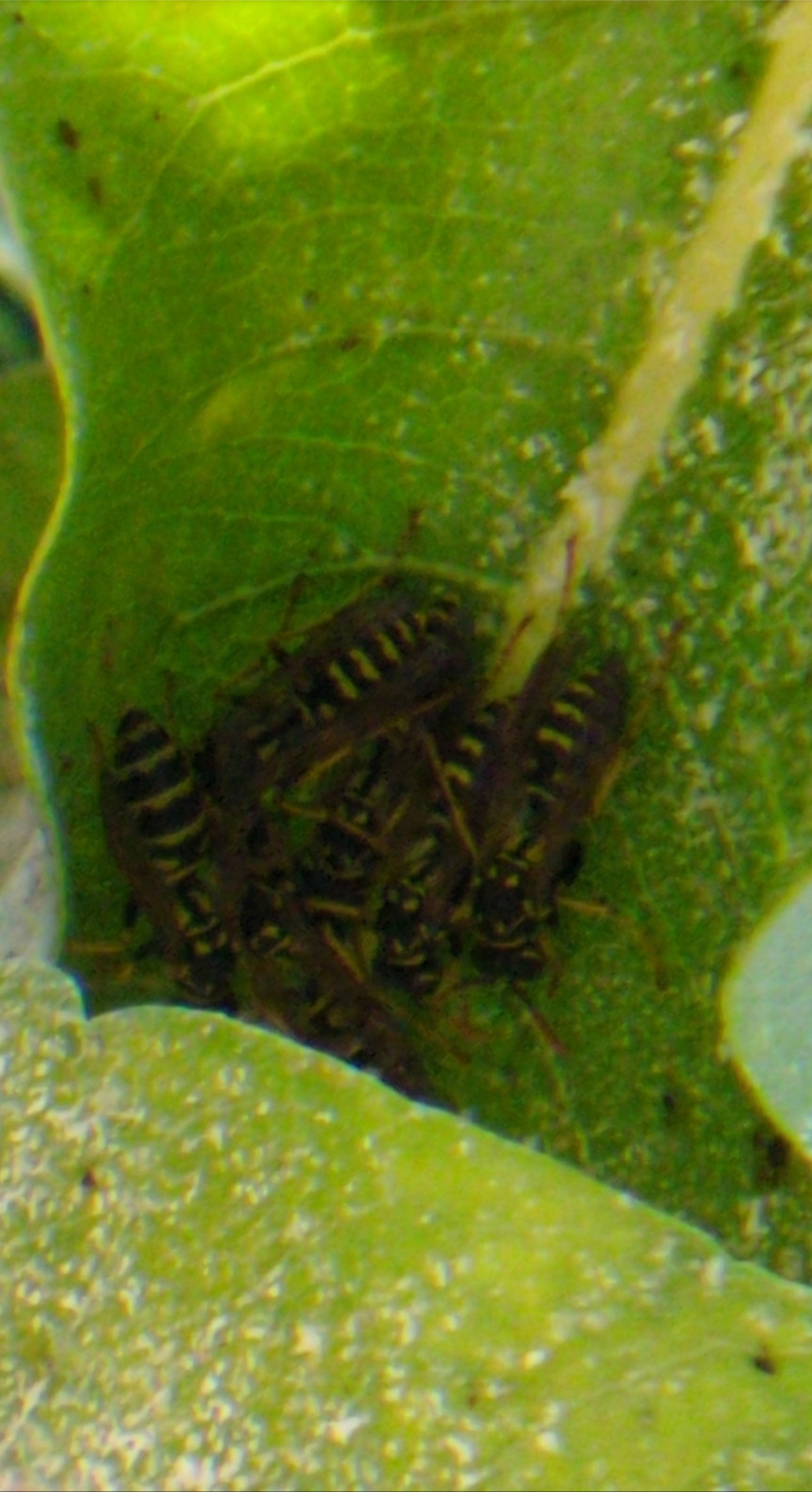

these asian paper wasps i found clumped up once 💛 so cutes
5 notes
·
View notes